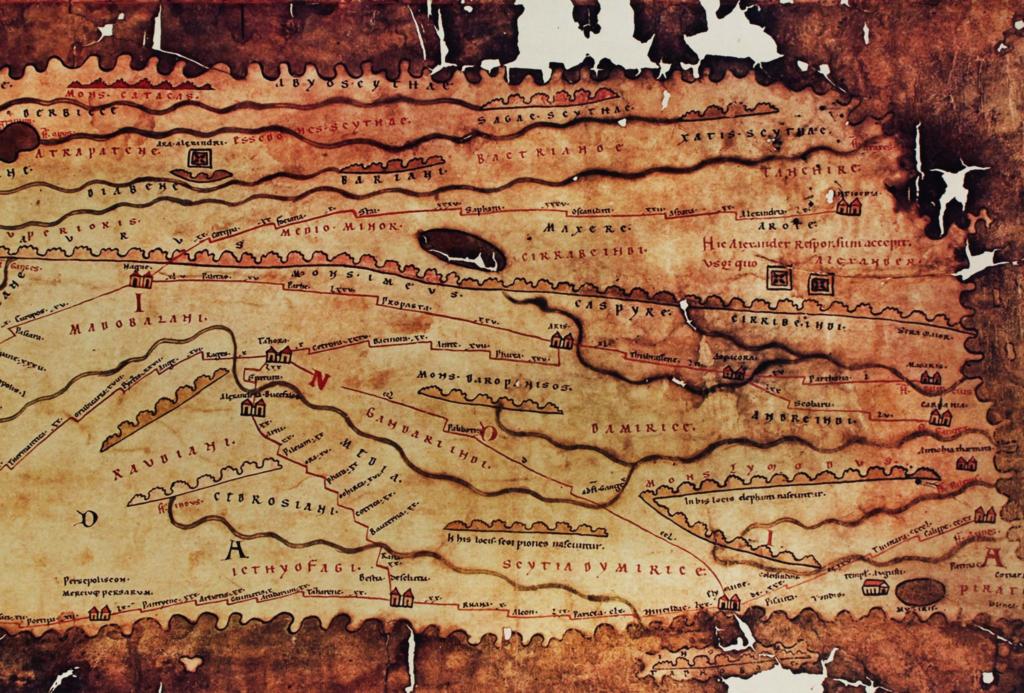
A map of India from Part 3 of Tabula Peutingeriana aka The Peutinger Map, a copy of the 13th-century Roman parchment map
When we think of the ways in which empires leave echoes of their greatness behind, we tend to think of lofty things like the literature, architecture, art and cities they inspired or built. But there’s another, far more pragmatic path to immortality: trade routes. Following these trails of commerce over sea and land, a finely grained picture emerges of the empire that forged them and were, in turn, forged by them. We’re going to focus on two such empires in India, one that ruled the seas in the south and the other expertly steering networks over land in the north.
For centuries to come, the silk and spices that poured through the networks commanded by the ancient powerhouses of the Cheras and Kushans would continue to shape the global economy. Let’s cast an eye on these influential dynasties and the signposts that tell their stories today, starting with…
The Siren Song of Muziris
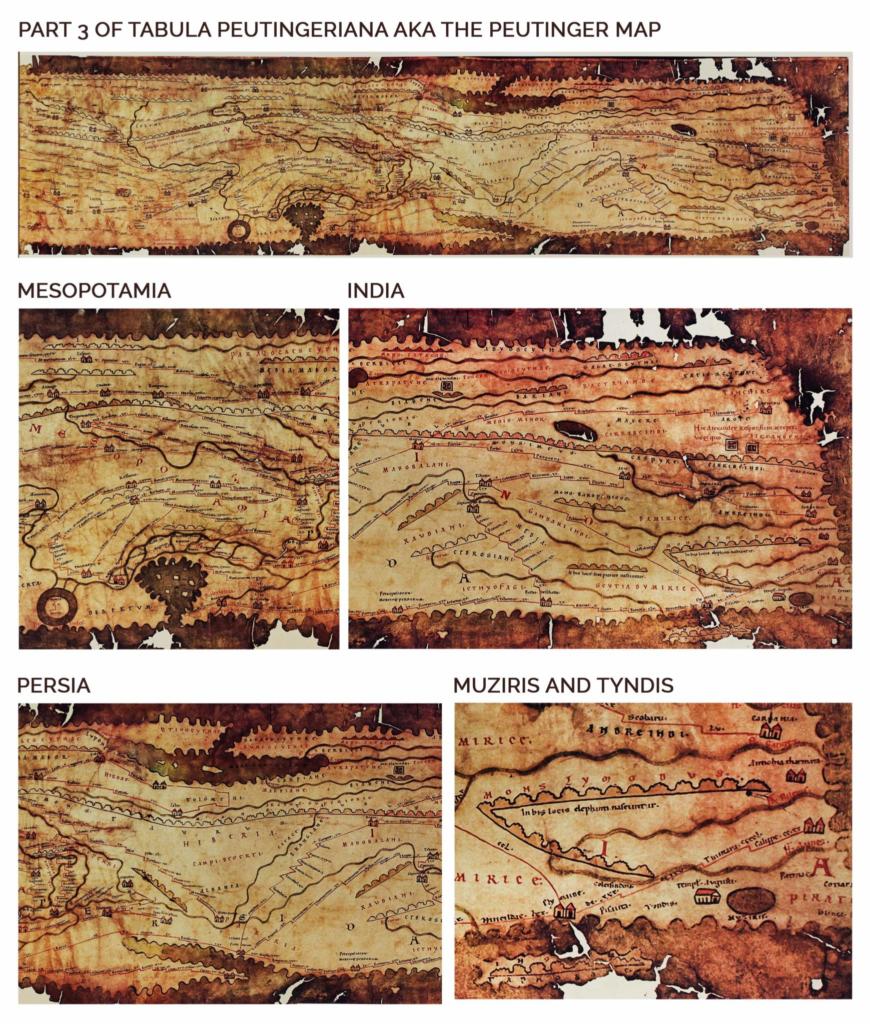
A closer look at parts of the Tabula Peutingeriana illustrating the trade hubs of Muziris and Tyndis on the Malabar Coast
Imagine a nation’s economy tanking under its citizen’s love for luxury. That was Rome, c 70CE. And most of those fine goods so entrancing to the Roman connoisseur flowed from a port called Muziris in southern India.
A note of stern disapproval runs through philosopher Pliny the Elder’s assessment of Rome’s trade with the Eastern world in this era. He calculated a trade deficit of around 100 million sesterces, per year, as the cost of the nation’s demand for luxury goods. (Side note: It’s an interesting experiment to try and determine the value of 1 Roman sesterces in today’s currency. One such effort from 2015 pegs it at worth about $2. It’s easy to see why Pliny was upset at a trade deficit of $200 million.) Years before Pliny, Emperor Tiberius had tried to ban the donning of silk – one of Asia’s prime exports – and voiced his disapproval of the financial drain brought upon Rome due to this trade. About 50% of this calculated deficit, Pliny attributed to trade with India, a major chunk of which historians attribute to exchanges at the port of Muziris along the coast of present-day Kerala.
Muziris is a sizeable speck on the Tabula Peutingeriana, which dates to 1265 and lays out the trade map of the ancient Roman empire on 12 sheets of parchment. It is mentioned in the Periplus of the Erythraean Sea, a Greco-Roman text from the 1st century CE that details trade and navigation in and around the Indian Ocean. Muziris was a port of leading importance, one that the Periplus observed “abounds in ships sent there with cargoes from Arabia, and by the Greeks.” Along with the port of Tyndis, this ancient town was a stronghold of the early Cheras also known as the Cheraputras or the Keralaputras. It was referred to as the kingdom of Cerobotra in the Periplus. Read more about Kerala’s maritime history here.
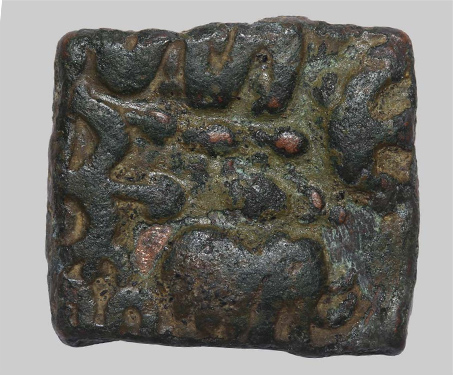
Un-inscribed copper coin from the Chera dynasty, 100 BCE to 250 CE from the Sarmaya numismatics collection – click on image to read more
In Sangam literature (created between 300 BCE and 300 CE) Muziris is described as a majestic city frequented by “the splendid ships of the foreigners” who arrived with gold and left carrying pepper. This was a hub of the early Cheraputras. One of the three powers that made up ancient Tamilakam (the others being the Cholas of Uraiyur and the Pandyas of Madurai), the Cheras are described in ancient Sangam poetry as efficient traders, patrons to poets and musicians, and leaders of a society that accorded high social status to women, and encouraged the harmonious coexistence of Jainism, Buddhism and Hinduism.
Yet, the larger legacy of the Cheras lies in the scope of their trade – according to the historian Strabo, by the early years of 1st century CE, under the reign of Roman Emperor Augustus, some 120 ships sailed every year to Muziris from the Red Sea port of Myos Hormos. They came for spices such as pepper and malabathrum aka bay leaf, ivory, pearls, semi-precious stones and silk, and left behind, among other things, gold, wine and olive oil. In fact, evidence of the regions’ thriving trade far precedes the Roman Empire – consider the peppercorn from Kerala discovered in the mummified nostrils of Egyptian pharaoh Ramses II, dating to around 1200 BCE!
While ancient south India could always boast of doing brisk maritime trade with the Egyptians and Phoenicians, the region saw a major boost during the last centuries Before Common Era and the early years of the Common Era. And for that, we have Greek sailor Hippalus to thank. He found a way to use the monsoon winds to sail to India’s western coast across the Arabian Sea.
Among the few surviving documents from this time that hints at the impressive scale of trade flowing through this port is the Muziris papyrus, a contract between a financier and an Alexandrian merchant dating to the mid-2nd century CE. It documents a loan pertaining to cargo loaded from the port of Muziris aboard a large ship by the name of Hermapollon and unloaded at an Egyptian port (Myos Hormos or Berenice or Berenike) to be carried onward to Alexandria. The shipment is priced at a whopping 6,911,852 sesterces after taxes.
Despite all the glory and romance that would adhere to the spice routes in centuries to come, there are few mentions of Muziris post the 5th century CE. In subsequent centuries, it becomes altogether nonexistent in records of trade networks or geographies of the region. Historians attribute Rome’s struggling economy post the 3rd century CE and the subsequent decrease in demand for pepper and other goods as a cause for Muziris’s apparent decline in prominence, even if Arab and Chinese traders would continue to patronize the market over subsequent centuries. Even the ancient Cheras are considered to have seen a lull at this time – there is considerably less known about them around the 3rd to 6th centuries, and reports of territorial battles with the Pandyas and the Cholas abound. The catastrophic floods of the Periyar river in the 14th century is believed to have forever altered the geography of Kerala, and the exact location of Muziris remains unknown even today.
Both the port and the empire sunk into the oblivion of the seas they once ruled.
The Commanders of the Crossroads
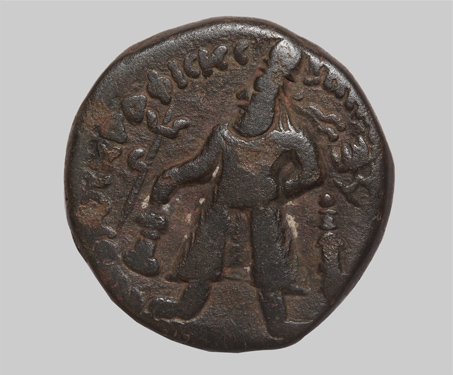
Copper coin of Vima Kadphises of the Kushan kingdom from the Sarmaya numismatics collection – click on the image to read more
While the ships of the ancient Romans, Egyptians, Arabs and other traders sent ripples across the global waters, another possibly more famous trade network traversed the breadth of Eurasia over land – the Silk Road. Spanning from Han China to Imperial Rome, and reaching into parts of North Africa and beyond, caravans of traders journeyed these myriad routes across steppes, deserts, mountains and inhospitable terrain. They exchanged goods and ideas, altering cultures all along the way.
The Kushans stood at the crossroads of Asia – right at the heart of this trade network – in the earliest centuries of the common era, which is also known as the First Silk Road Era. It was when the network is considered to have first emerged as a thriving, solidified entity. Still, most of the literature on the emergence of the Silk Road focuses on China, Rome, Parthia and Persia, and it’s only recently that research has proven the Kushans couldn’t have been mere facilitators of this network. They were the instigators of it besides being very active participants.
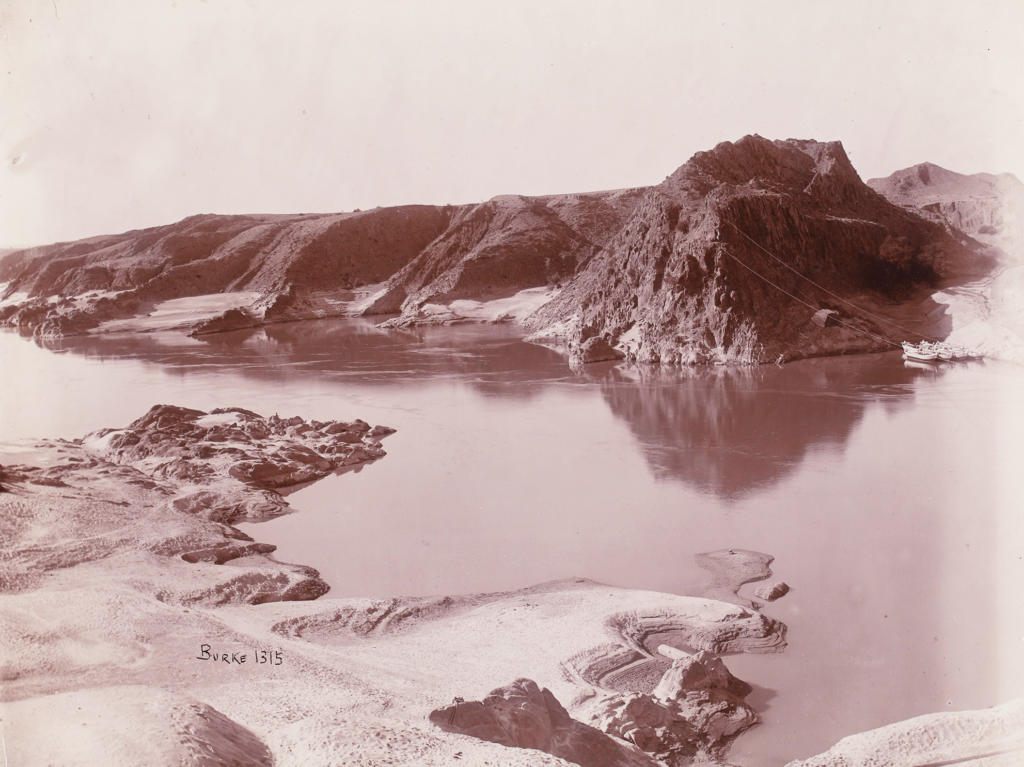
River Indus At Khushal Garh in present-day Khyber Pakhtunkhwa, 19th century
The Kushan (Guishuang or Kouei Shuang) were one of five branches of the Yuezhi, a loose confederation of Indo-European nomadic tribes who lived near the Tarim Basin in present-day Xinjiang, China until they were driven out to areas under ancient Bactria (parts of present-day Afghanistan and Tajikistan). In the early 1st century CE, Kujula Kadphises, the leader of the Kushans united all five of the tribes and set up a single new empire, which radiate from the Kabul river valley to regions previously controlled by Scytho-Parthians and various Central Asian tribes.
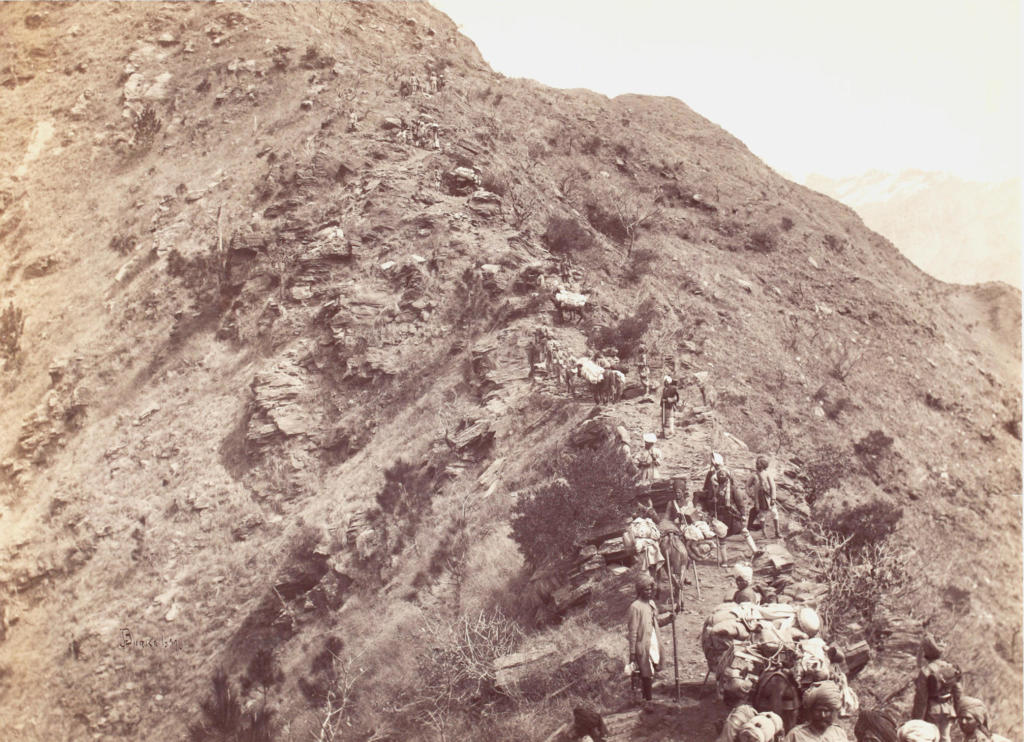
‘Moving supplies up the Khyber during the Second Afghan War’, c. 1879
At their peak, under the rule of Emperor Kanishka in the mid-2nd century CE, the Kushans controlled a large territory spread across parts of present-day Central Asia, Afghanistan, Pakistan and reaching as far east in India as Varanasi. Accordingly, he had two capitals Purushapura (now Peshawar), where the remnants of the Kanishka Stupa still stands, and Mathura in Uttar Pradesh, where various Hindu and Buddhist sculptures from the time have been unearthed.
Despite their strategic location along a vast swath of one of the primary trade networks of the time, the Kushan story has mostly been overlooked by scholars. Lack of written texts or even many inscriptions make it hard to piece together their exact history, chronology or the reach of their empire. There are few surviving monuments or structures to tell their tale, and the various modern political conflicts that now plague these regions make dedicated archaeological missions difficult. Yet what has been discovered is the Kushan’s patronage of Buddhist Gandharan art as well as the Mathura school of art. These are evidence of a sophisticated empire that seemed to championed syncretism and assimilation between a wide range of cultural and religious groups. This is particularly evident in Kushan coinage. A 2nd century CE coin of Vima Khadphises in the Sarmaya collection features both Hindu deity Lord Shiva (the king was a devotee) as well as the Buddhist tri-ratna symbol. The king’s name is inscribed both in Greek and in the ancient Indian script of Kharosti.
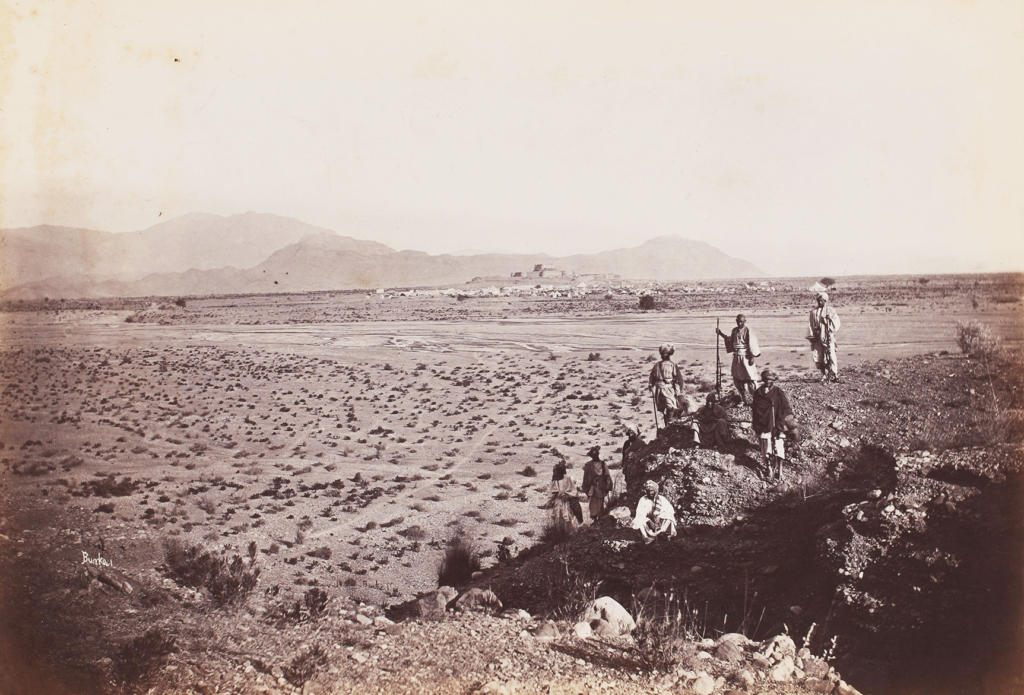
Fort Jumrud and the entrance to the Khyber Pass, c. 1878
Yet to truly gauge what could have been the power of the Kushans at the time, one has to uncover evidence from their former trade networks. Their coins are said to have been found in regions as far-flung as the Persian Gulf, Ethiopia, Eastern Europe, rural Rome and even Scandinavia! The height of their empire also coincides with the Silk Road’s first and robust emergence, and this is telling of their contributions in steering the region’s many smaller trade routes into a larger network. Located strategically between Han Dynasty in China, the Parthians (present-day Iran) and the Roman empire, the Kushans made the most of their geographical advantage.
To get an idea of just how expertly they cast their sphere of influence on a region much beyond the territory they controlled, consider how they managed to dominate trade with Roman ships on Barbaricum (near present-day Karachi) and Barygaza (Bharuch). Barygaza too finds mention in Pliny’s account, and both are marked as major market ports in the maritime trade networks of the 1st century CE according to the Periplus. Commercial goods ranging from cotton textiles and gemstones to wheat and rice were traded here. Silks of the finest quality, which in most likelihood had traveled overland via Kushan territory from China, was also a prime commodity that was carried away by merchant ships from these ports. Access to these ports would let the Kushans bypass Parthia and its heavy taxes, and they no doubt saw the benefit of supplementing their land-based routes with maritime trade participation as well. So they used sophisticated diplomacy with the local Indo-Parthian who ruled these ports and pretty much enjoyed direct control over trade here. This seems characteristic of the Kushans – to emphasize building cordial relations with local powers and expanding their influence rather than continually conquering new territories and strictly specifying borders. The socio-cultural qualities of the Kushan empire – tolerant and multicultural – makes sense here too; they were both the reason for the success of their trade routes and a consequence of it.
The Kushan empire didn’t last too long, fragmenting into various several smaller independent kingdoms over the 3rdcentury CE. And despite how little they left behind for us to know them by, the legacies of their intrepid traders and merchants are as hardy and resilient as the routes they traversed. Much the spice trade would continue to flourish over centuries past the decline of the ancient Cheras and their beloved Muziris, the Silk Road too would endure and definitively alter the course of global history, trade and economy.
References
- Srinath Perur. Guardian. Lost cities #3 – Muziris: did black pepper cause the demise of India’s ancient port?
- De Romanis, M. Maiuro (Eds.), Across the ocean: Nine essays on Indo-Mediterranean trade, Columbia studies in the classical tradition 41, Brill, Leiden; Boston (2015)
- Marco Galli. Journal of Eurasian Studies Beyond frontiers: Ancient Rome and the Eurasian trade networks
- Duraiswamy Dayalan. Ancient Seaports On The Western Coast Of India: The Hub Of The Maritime Silk Route Network
- John Thorley. The Roman Empire and the Kushans
- Paul Wilson. The Kushans and the Emergence of the Early Silk Roads
- Gafurov B Kushan Civilisation and World Culture Kushan Studies in USSR (eds. B Gafurov et al), Indian Studies Past and Present, 1970
- Craig Benjamin, Maritime Routes of the First Silk Road Era, 2018, Cambridge University Press



